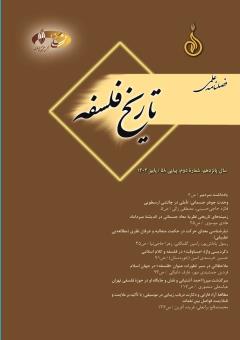وحدت جوهر جسمانی: تأملی در چالشی ارسطویی
محورهای موضوعی : مطالعات تطبیقی تاریخ فلسفهفائزه حاجیحسینی 1 , مصطفی زالی 2 *
1 - دانشآموخته کارشناسی ارشد فلسفه، دانشگاه تهران، تهران، ایران
2 - استادیار گروه فلسفه، دانشگاه تهران، تهران، ایران
کلید واژه: جوهر جسمانی, وحدت, ماده, صورت, پارادوکس وحدت, ترکیب اتحادی ماده و صورت,
چکیده مقاله :
این جستار ناظر به چالشی برآمده از متون ارسطو در تبیین حقیقت جوهر جسمانی است. از یکسو، جسم بمثابه جوهر، همواره ملازم با گونهیی تقدم هستیشناختی است، بنابرین وحدت جوهر جسمانی وحدتی مقدم بر ماده و صورت است. از سوی دیگر، دریافت ارسطو از حقیقت تغییر بگونهیی است که لازم میآید در فرایند تغییر و تبدیل، ماده بعنوان یکی از اجزاء جسم، بمنزلة حافظ وحدت تغییر، در این فرایند ثابت باقی بماند؛ پس جوهر جسمانی مرکب از ماده و صورت، متأخر از آندو و وابسته به آنهاست. یعنی جوهر جسمانی از یکسو، مقدم بر ماده و صورت است و از سوی دیگر، متأخر از ماده و صورت و وابسته به آنها. پاسخ به این مسئله ـکه با عنوان «پارادوکس وحدت» از آن یاد میشودـ در دو قالب تفاسیر سنتی و جدید صورتبندی میگردد. پژوهش پیشرو ابتدا عناصر اصلی ایندو تفسیر را مرور مینماید و با ایجاد تمایز میان دو نوع وحدت، موسوم به وحدت عمودی و افقی، نشان میدهد که تفسیر سنتی از تبیین وحدت عمودی ناتوان است و تفسیر جدید برای تبیین وحدت افقی ناکافی است. سپس، تفسیر اتحادی از ترکیب ماده و صورت ـبعنوان پاسخی سوم به این مسئلهـ صورتبندی میشود که بدون طرح اشکالات قبلی، وحدت افقی و عمودی را تبیین میکند.
This paper focuses on a challenge rooted in Aristotle’s writings on the truth of corporeal substance. On the one hand, body as substance is always concomitant with a kind of ontological priority. Therefore, the unity of corporeal substance is prior to the unity of matter and form. On the other hand, Aristotle’s perception of the truth of change necessitates that matter, as one of the components of body, remains fixed in the process of change in order to preserve the unity of change. Thus, corporeal substance consists of matter and form, is posterior to them, and depends on them. The response to this problem, which is called the “paradox of unity”, is formulated in two traditional and new molds of interpretation. The present study initially reviews the main elements of these two interpretations and then, through distinguishing between the two types of unity, namely vertical and horizontal, demonstrates that the traditional interpretation is incapable of explaining the vertical unity of matter and form. It also stipulates that the new interpretation is insufficient for clarifying horizontal unity. Finally, the authors provide a unitary interpretation of the synthesis of matter and form, as a third response to this question, which explains both horizontal and vertical forms of unity free from previous problems.

